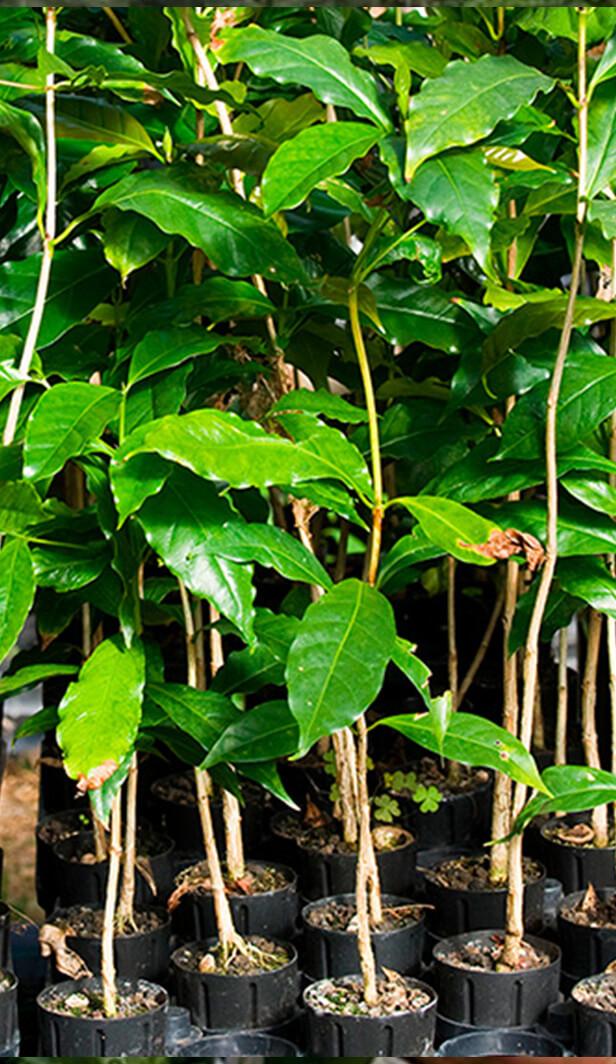Never Fear The Plantlets Are Here
The NESCAFÉ scientists in Tours, France, started working on Arabica and Robusta coffee plant science back in 1986. Over the course of several decades, researchers tested the best performing plant varieties in real life conditions on local experimental farms across the globe.
With 50% higher yield per tree, selected varieties can help reduce the CO2e (carbon dioxide equivalent) footprint of the green coffee beans up to 30%, because more coffee is produced using the same amount of land, fertiliser, and energy.

When The Right Choice is a Good Choice
Since 2010*, NESCAFÉ Plan farmers received 290 million improved coffee plantlets and by 2030 NESCAFÉ aims to have distributed up to a total of 400 million coffee plantlets. Besides helping farmers to improve productivity and renovate their coffee trees with improved varieties, plantlets also help farmers use their land better.
In Colombia, between 2010 and 2012, climate change and rising temperatures made coffee trees vulnerable to leaf rust disease. Faced with hard choices, and the possibility of clearing native forests to plant more coffee, farmers with NESCAFÉ’s support avoided taking drastic measures by renovating their farms with improved disease-resistant coffee plantlets. (*2010-2023)

Since 2010*, NESCAFÉ Plan farmers received over 290 million coffee plantlets and by 2030 NESCAFÉ will have distributed 400 million coffee plantlets. (*2010-2023)

We don’t just help grow coffee we help families grow
In Mexico, during the coffee rust crisis of 2012-2015, a fungus devastated crops and threatened livelihoods. NESCAFÉ distributed more than 37 million new disease-resistant coffee plantlets to over 33,000 farmers, and helped farmers tend to their new plantlets. With these new plantlets, farmers doubled their yields in key regions like Chiapas and Veracruz.

It's Not The Size Of The Farm, It’s How You Use It
Not all coffee farms are created equal. NESCAFÉ collaborates closely with farmers to understand their specific challenges in their region. Some coffee trees grow tall up to two to three metres, making it difficult to care and harvest them.
In Tezonapa, Veracruz Mexico, NESCAFÉ agronomists helped improve yields by supplying smaller coffee trees. Where 600–700 plants could fit in a single hectare, farmers could now fit 1,200–1,300, practically doubling production on the same land. In addition, where the older plants took up to three years to produce coffee, the newer plants started producing after just one year.

A Brighter Future In Every Cup
Every cup of NESCAFÉ contributes to the effort of those who are working to create the next generation of coffee varieties that support a better future for farmers, coffee, and their environment. With the development of next generation drought-resistant varieties emitting less CO2 per kg of green coffee, the future looks even brighter.

Today’s community favourites
Discover some of the most enjoyed articles from across the site




